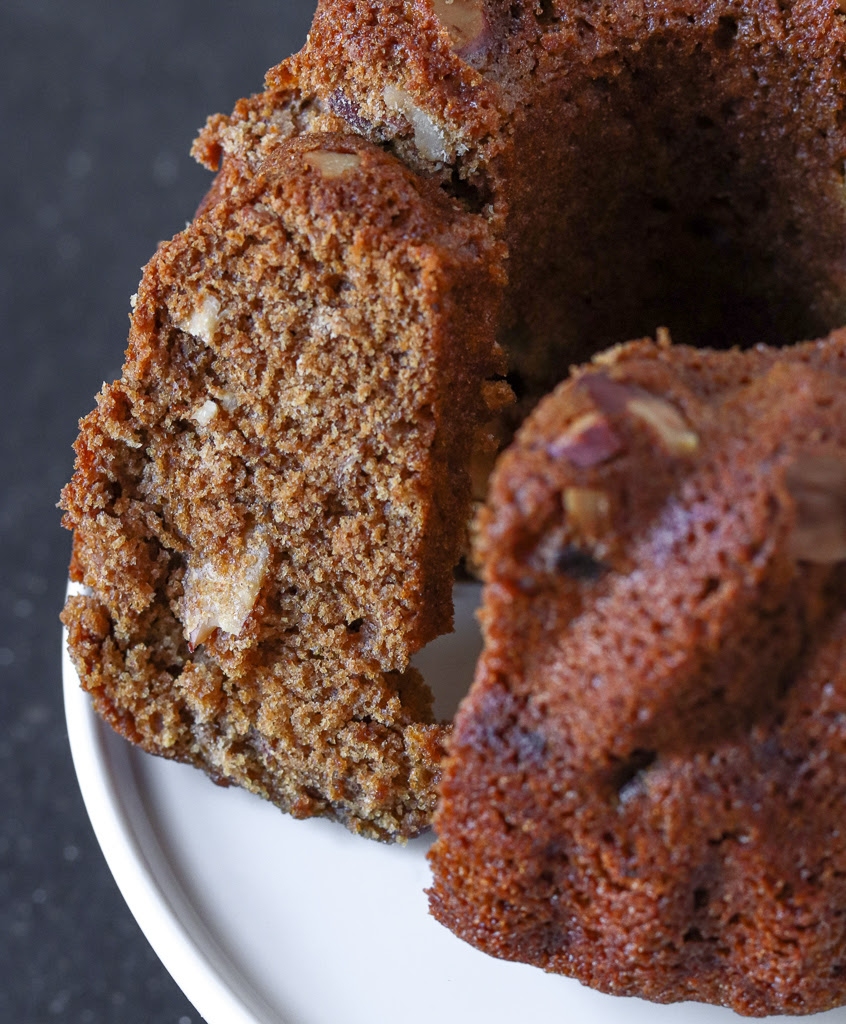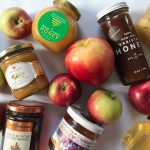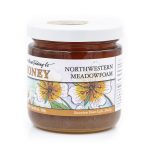Excerpt from Ari’s Top 5 enews
A sweet Jewish New Year’s tradition
Eating honey at Rosh Hashanah is a traditional way to ring in a “sweet new year.” As Arthur Schwartz wrote in Arthur Schwartz’s Jewish Home Cooking: Yiddish Recipes Revisited, “Honey cake is not so much loved as revered.” This honey cake is one of my favorite ways to elevate my honey eating. We only see it once a year here, so now’s the time to take advantage of the Bakehouse’s work.
Lekach, or honey cake, here at the Bakehouse, is made from a long list of luscious ingredients, including a healthy helping of buckwheat honey from a beekeeper in northern Michigan. The honey has a big, bold, dark, mysteriously fruity flavor. (For more on what makes one honey so different from the next, see the honey chapter in the Guide to Good Eating.) Add in rye flour (if it’s relevant, it’s 100% rye flour—the cake is completely wheat-free), sugar, freshly cracked eggs, golden raisins, toasted almonds, fresh orange and lemon zest, ground cinnamon, cloves, ginger, nutmeg, and some freshly brewed black tea, and you’ll send the New Year off to a good start. Amy Emberling, co-managing partner at the Bakehouse says, “I think it’s an overlooked winner—complex layering of flavors, an interesting and subtle version of gingerbread. I love the ingredient list.”
Honey has long been important in Jewish tradition. Author Gil Marks says in The World of Jewish Cooking that, “Honey was smeared on a slate containing the letters of the alphabet and the child licked them off so that the ‘words of the Torah may be sweet as honey.’” How did honey come to be such a big thing for Jewish holidays in northern Europe? In the centuries before sugar became widespread, there were really only two main sweeteners to be used in Northern Europe: cooked down grape must or honey. Baked goods of this sort date back centuries, to a time in Eastern Europe when chocolate didn’t exist, spices were the whip, and shelf life was essential. Which makes clear then why this honey cake is in the same tradition as German spice cookies, Stollen, fruit cake, etc.
Unlike other baked goods, some which can stale quickly, honey cake actually gets better after it sits for a few days. Honey is hygroscopic—it absorbs moisture over time rather than drying out. So, in centuries past, when shelf life would have been much more difficult to manage, that was a huge advantage. As it sits, the flavors will set up and develop over time, much like Stollen does at Christmas time. A slice of the Bakehouse’s Buckwheat Honey Cake is great after dinner, or to start the day for breakfast. It’s big, well rounded, softly spicy flavor would be fantastic with a cup of coffee. The honey cake is terrific with Creamery gelato as well. Or you can toast and serve it with a little Creamery Cream Cheese in the morning. It’s a wonderful way to ring in the New Year!
The Buckwheat Honey Cake is a seasonal item that is usually available in the Fall during Rosh Hashanah.
Read more about honey at the Deli here!



